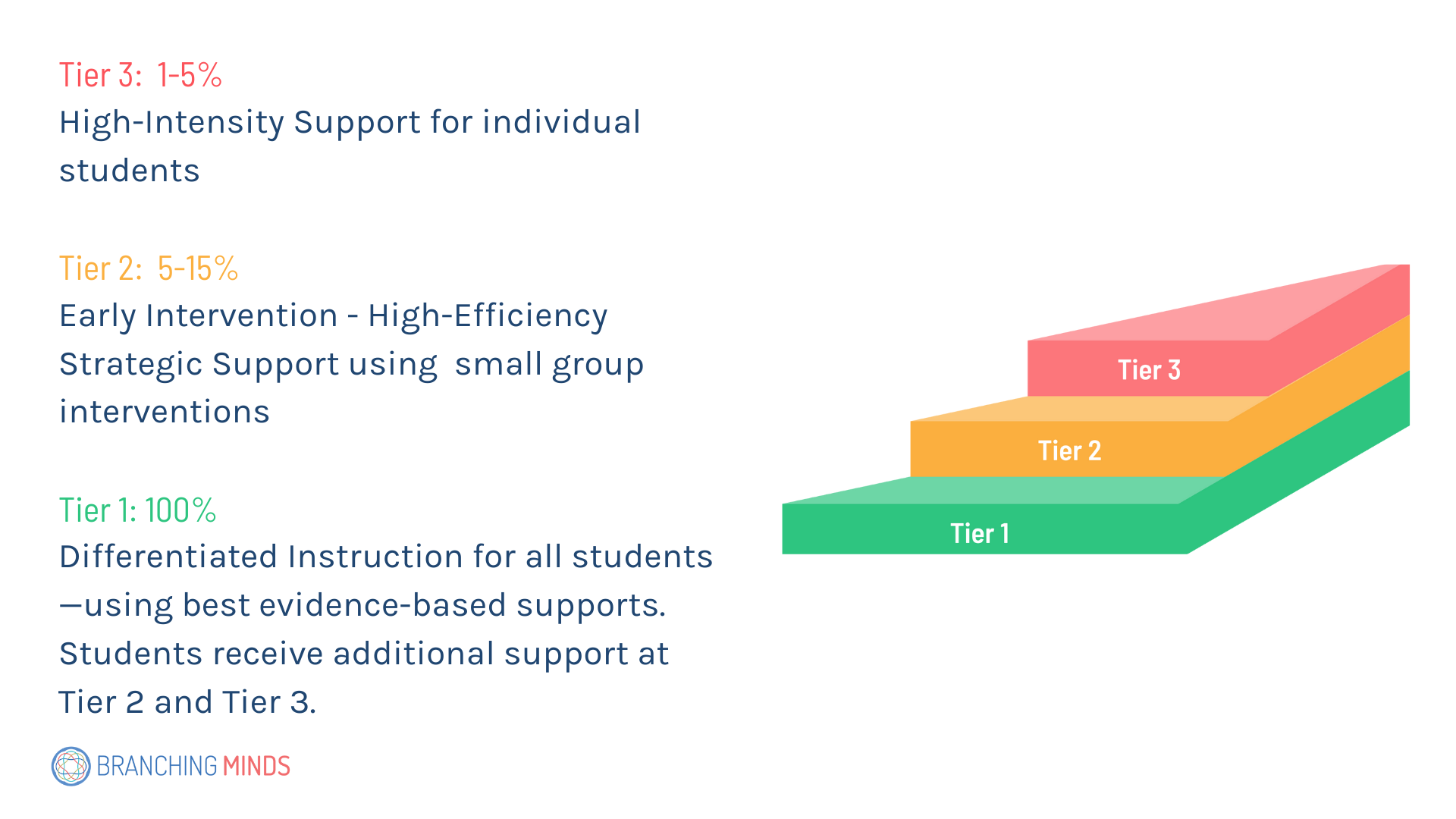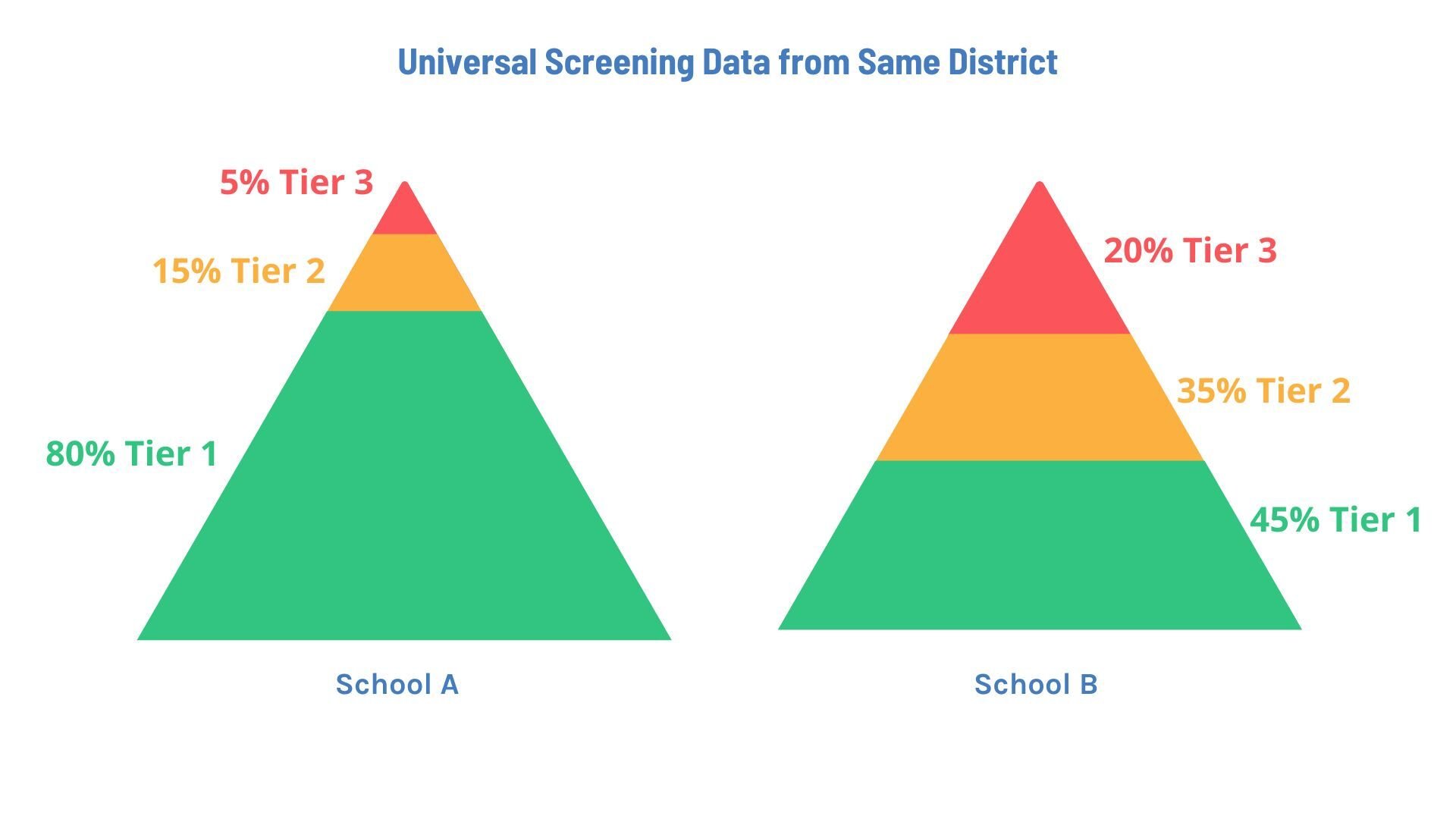Every educator wants to make sure no student slips through the cracks. But even with years of reform and hard work, many schools still find that some students aren’t getting the support they need to thrive. It’s not for lack of effort; the systems we rely on weren’t built to catch every need early enough. That’s where a Multi-Tiered System of Supports (MTSS), guided by regular universal screening, can make a difference. With the right tools, schools can identify challenges sooner, provide targeted support faster, and give every student a real chance to succeed.
Key Strategies for Utilizing Universal Screeners
- Screen early: Universal screening catches needs before they grow.
- Use quality tools: Valid, reliable screeners give usable, accurate data.
- Act on data: Let screening drive both instruction and tiered support.
Much like a routine checkup at the doctor’s office, where assessments and screenings help identify issues early, schools need a proactive approach to student support. Universal screening offers that early insight, helping teams flag potential barriers before they escalate and ensuring students receive the right support at the right time.
What is Universal Screening?
Universal screening is the practice of assessing all students on a set schedule—commonly in the fall, winter, and spring—using brief, standardized tools designed to identify students who may need additional support to be successful in academics or behavior.
Universal screeners are not diagnostic in nature—they are not detailed enough to pinpoint every issue. Instead, much like how a blood pressure reading or lab test can flag an issue before symptoms appear, they flag areas where additional information and collaboration are needed to create an intervention plan for the student.
For example, if a screener flags a student as behind in reading, but the tool doesn’t offer insights into specific skill deficits, the next step is to conduct more detailed diagnostic reading assessments. That information can then be used to create SMART goals tailored directly to the student's specific needs.
Why are Universal Screeners so Critical?
MTSS teams use universal screening data for two essential purposes:
1. To Identify Students in Need of Additional Support
Screeners help objectively determine which students may need a Tier 2 or Tier 3 interventions. This tiering process should not be based on teacher perception or behavior alone, but on valid and reliable data.
2. To Evaluate the Effectiveness of Tier 1 Core Instruction
If the majority of students are not meeting benchmarks, it may indicate issues with the delivery or design of core instruction.
NOTE: If core instruction is effective, at least 80% of students should not need any additional support to be successful. If that threshold isn’t met, the focus should shift from interventions to improving Tier 1 instruction for all.
💡 Related Resource: Learn more about ensuring all students get the right instruction in this Core Instruction Guide.
What to Look for in an MTSS Universal Screener
Dr. Eva Dundas, Chief Product Officer at Branching Minds, recommends selecting screeners based on the following six criteria.
- Validity - Measures the intended skill or domain
- Reliability - Produces consistent results across settings
- Sensitivity - Accurately identifies students at risk
- Specificity - Limits false positives
- Practicality - Quick and simple to administer
- Consequential Validity - Free from cultural or linguistic bias
 Choosing a tool that meets these standards helps ensure that decisions about student support are both efficient and fair. The National Center on Intensive Intervention offers a screening tools chart that can assist districts in evaluating the quality of their chosen assessments.
Choosing a tool that meets these standards helps ensure that decisions about student support are both efficient and fair. The National Center on Intensive Intervention offers a screening tools chart that can assist districts in evaluating the quality of their chosen assessments.
The Role of Universal Screening in Tier Placement
After a screener is administered, schools interpret the data using predetermined performance benchmarks or “cut scores.” These cut scores provide a standardized basis for tiering students into the levels of MTSS.

These benchmarks help educators identify not only individual students who may need help, but also systemic concerns within instruction. If Tier 1 instruction is not supporting the expected majority, this data becomes a springboard for reflection on core instructional practices.
Why Objectivity in Screening Matters
One of the most valuable functions of universal screening is its ability to reveal patterns that might otherwise go unnoticed, especially when schools take time to review data across different student groups. When screeners are selected carefully and implemented consistently, they can highlight differences in outcomes across classrooms or campuses. For instance:
- School A may find that only 20% of students need additional support.
- School B , using the same screener and benchmarks, may find that 55% of students are in need of additional intervention.

This kind of difference raises important questions: Is core instruction being delivered effectively? Could staffing changes, attendance issues, behavior problems, or instructional practices be influencing these results?
Objective screening data also helps teams make decisions based on consistent criteria, rather than relying solely on observations or referrals, which can vary widely depending on who is making them. This structured approach ensures that all students are evaluated fairly and systematically, helping schools respond to actual needs with clarity and confidence.
➡️ Related Resource: Top 5 MTSS Collaboration Tips From Branching Minds
Using Screener Data to Guide Resources and Collaboration
Universal screening data doesn't just identify students in need of support —it drives decisions across the campus or district. It helps MTSS teams answer questions like:
- Do we need to reallocate intervention staff?
- Are supports being delivered where they’re most needed?
- Are our interventions working at Tier 2? Tier 3?
Just as a doctor wouldn’t prescribe the same treatment to every patient, schools shouldn’t provide cookie-cutter interventions. Some students may need intensive support. Others may simply require additional time or scaffolding.
This is why collaboration is critical. A strong MTSS team—made up of administrators, specialists, teachers, and school psychologists—ensures that data leads to action. Together, they make decisions, plan interventions, and evaluate outcomes across the year.
Build and Strengthen Your MTSS Team with these Resources:
➡️ Blog: MTSS Meetings Guide and Toolkit
➡️ Blog: 5 Questions to Ensure Efficiency with MTSS Teams & MTSS Meetings
➡️ On-Demand Webinar: How to Create an MTSS Team to Guide Your MTSS Practice
Reflection: Questions to Ask After Screening
After each universal screening window, take time to reflect as a team:
- Where are our instructional gaps?
- What trends are we seeing across subgroups?
- How are we adjusting our resources based on the data?
- How is our MTSS team collaborating to address these needs?
These conversations can lead to more effective MTSS practices—and ultimately better outcomes for all students.
Universal Screening Matters
Universal screeners are foundational to an effective MTSS framework. When selected carefully and used consistently, they provide an objective, research-based lens into how students are progressing and how well systems are functioning.
The goal of MTSS isn’t just to help struggling students—it’s to ensure that every student has access to high-quality instruction and timely support. Universal screening offers the data we need to meet that goal, tier support with precision, and ensure no student falls through the cracks.

About the author
Larissa Napolitan
Larissa Napolitan is the Content Marketing Manager at Branching Minds and host of the Schoolin’ Around podcast, where she spotlights innovative voices and practices shaping education today. A former middle school teacher and instructional coach, Larissa draws on her classroom experience to create meaningful content that connects research, storytelling, and practical insights for school and district leaders. She is passionate about amplifying educator voices and supporting the growth of all students.

Your MTSS Transformation Starts Here
Enhance your MTSS process. Book a Branching Minds demo today.













.png?width=1436&height=956&name=How%20MTSS%20Utilizes%20Universal%20Screeners%20to%20Tier%20Accurately%20and%20Objectively(preview).png)




.jpg?width=716&height=522&name=Better%20MTSS%20Meetings%20Blog%20(preview).jpg)